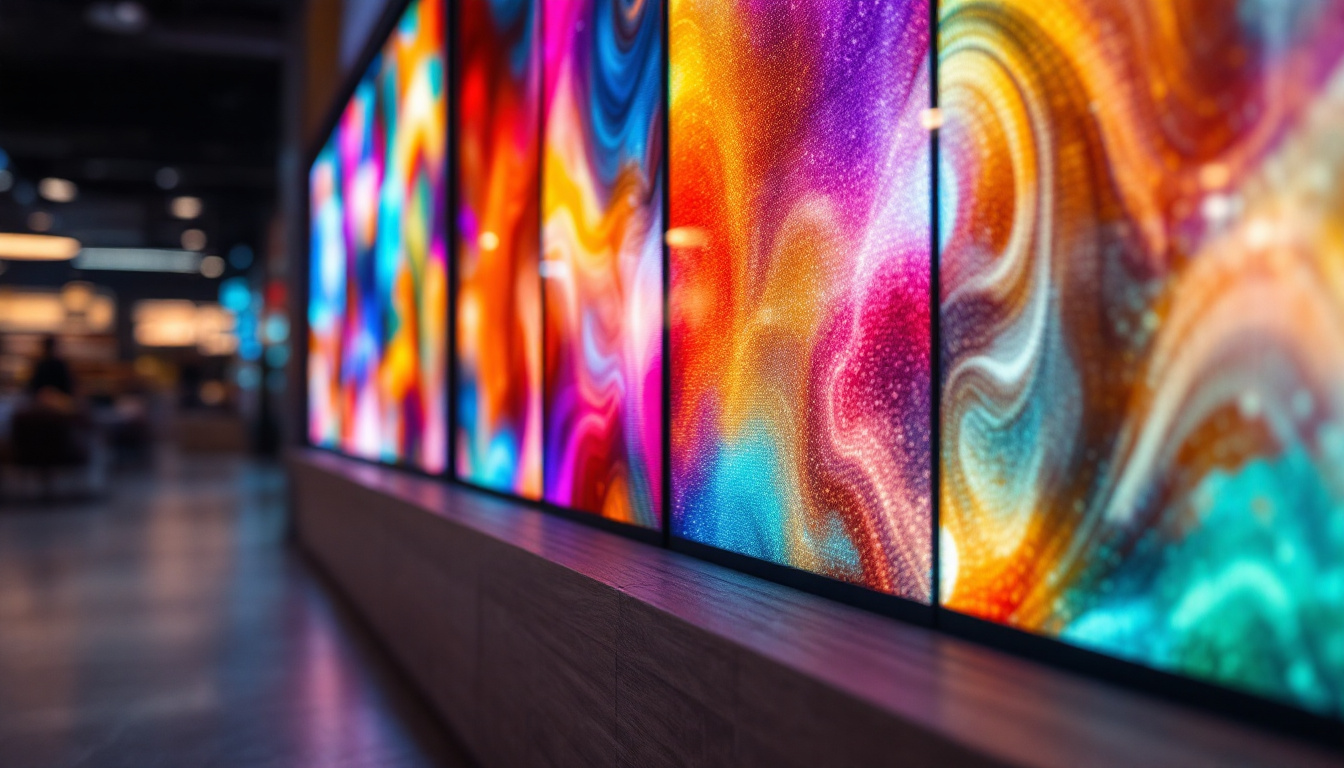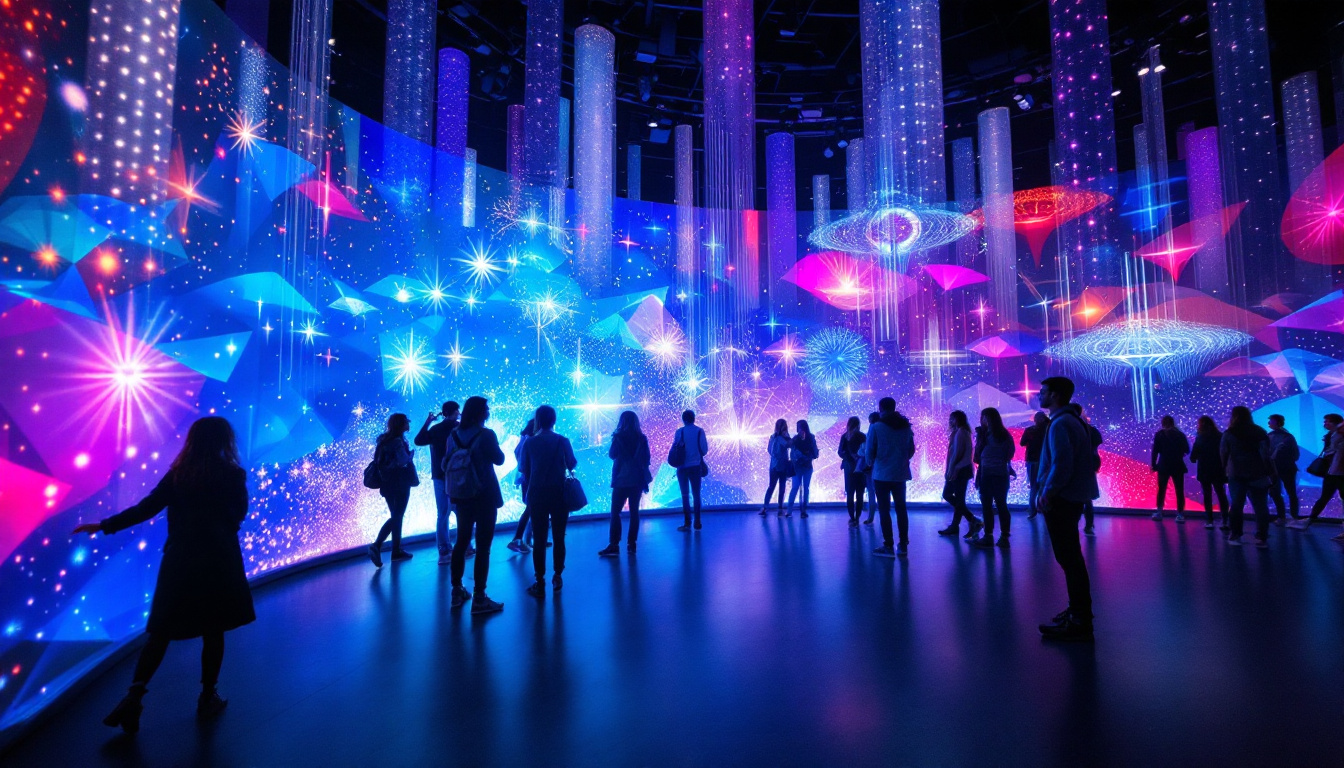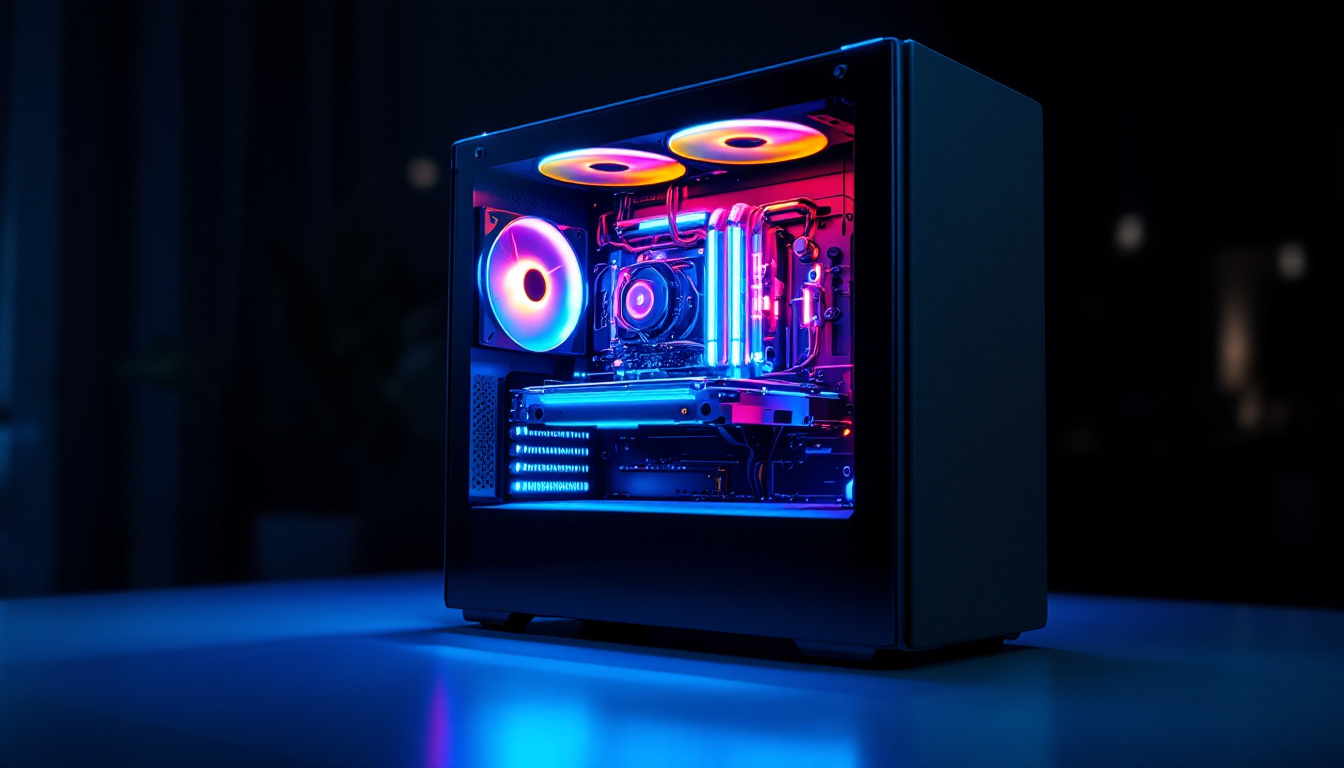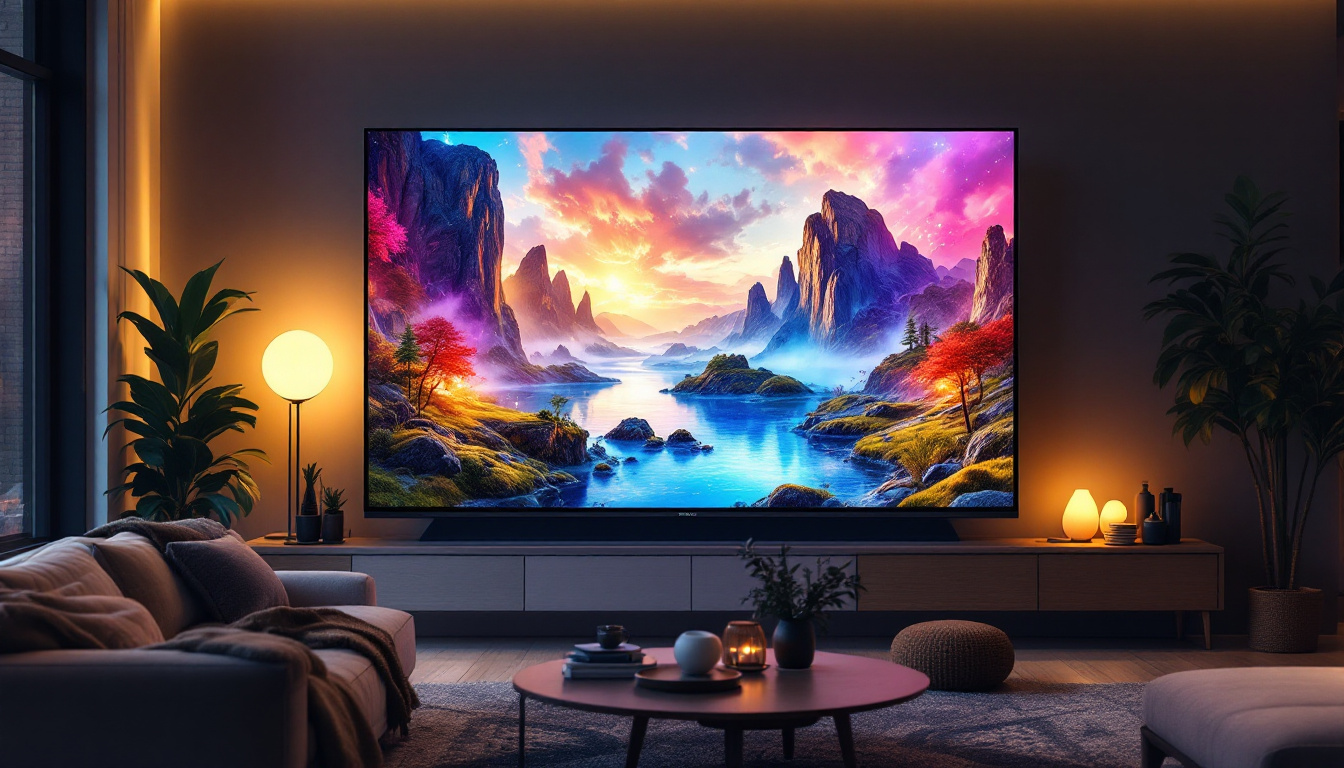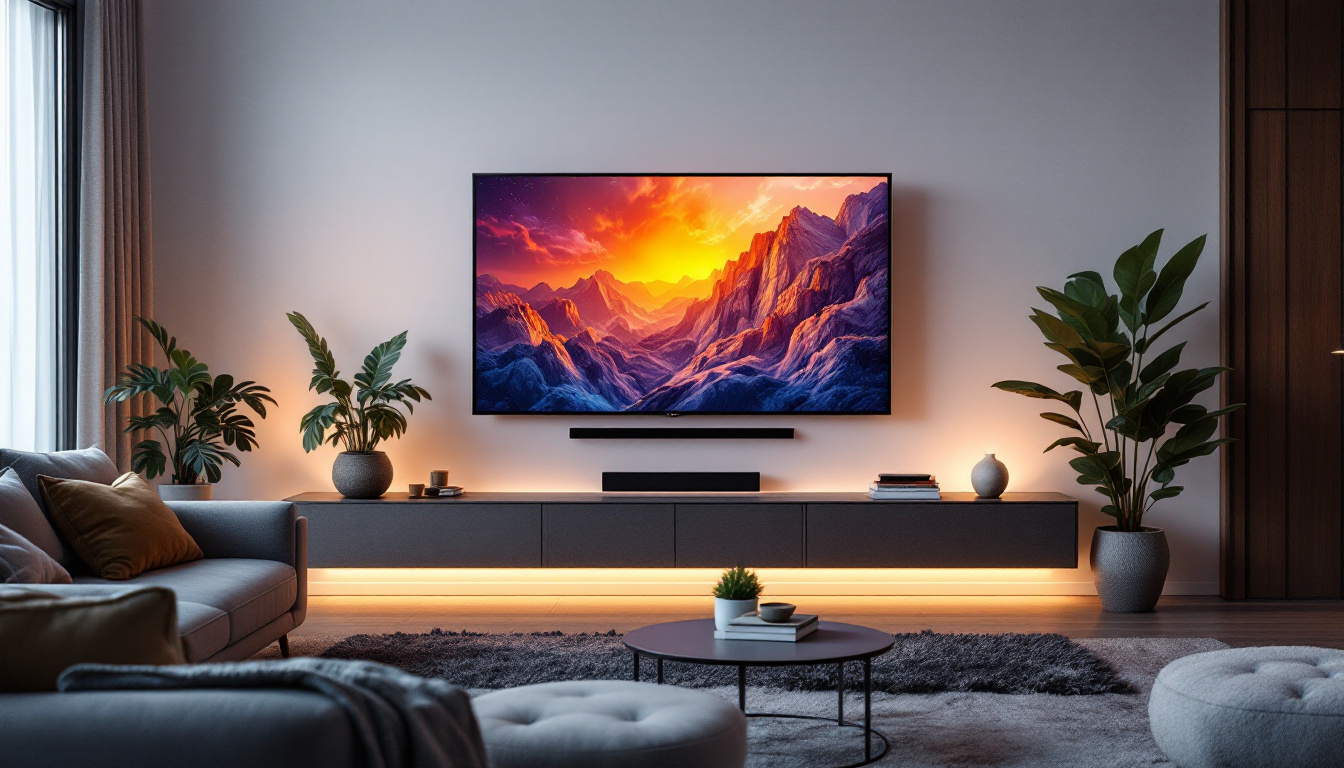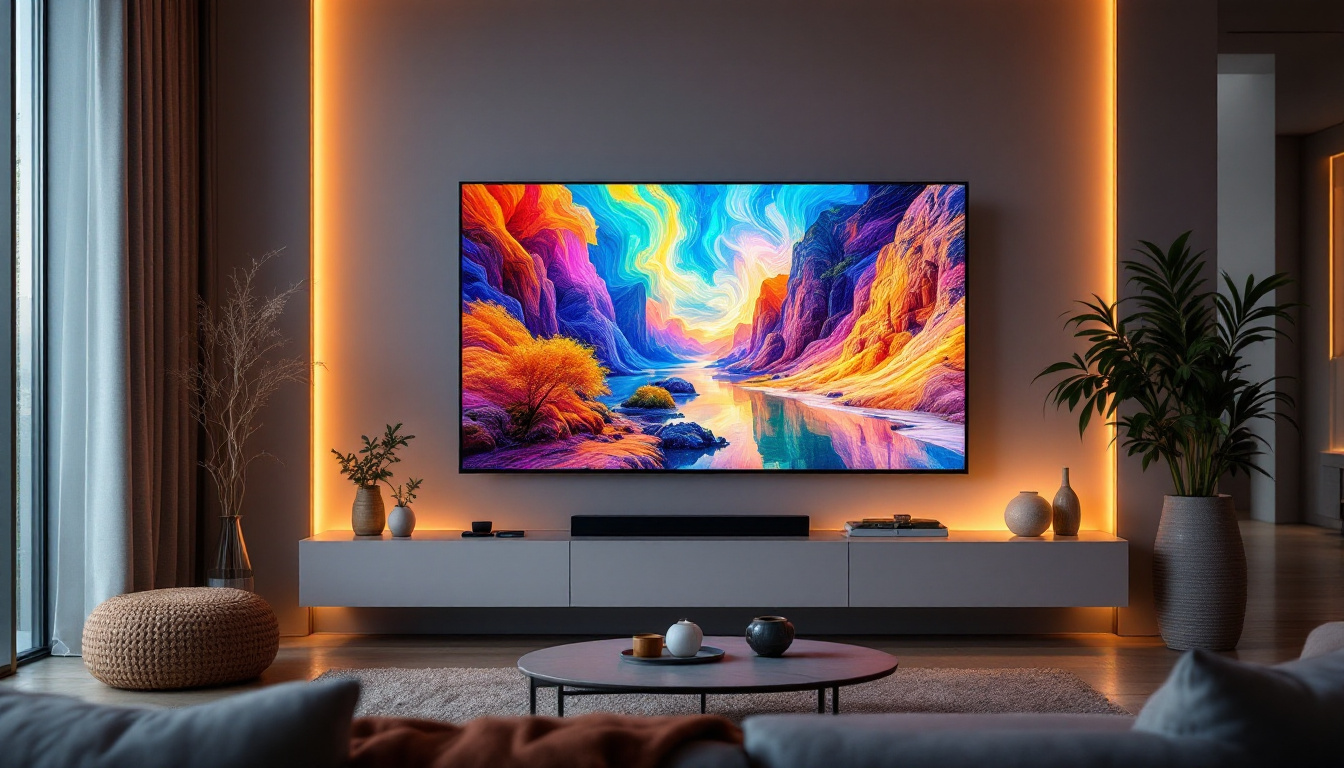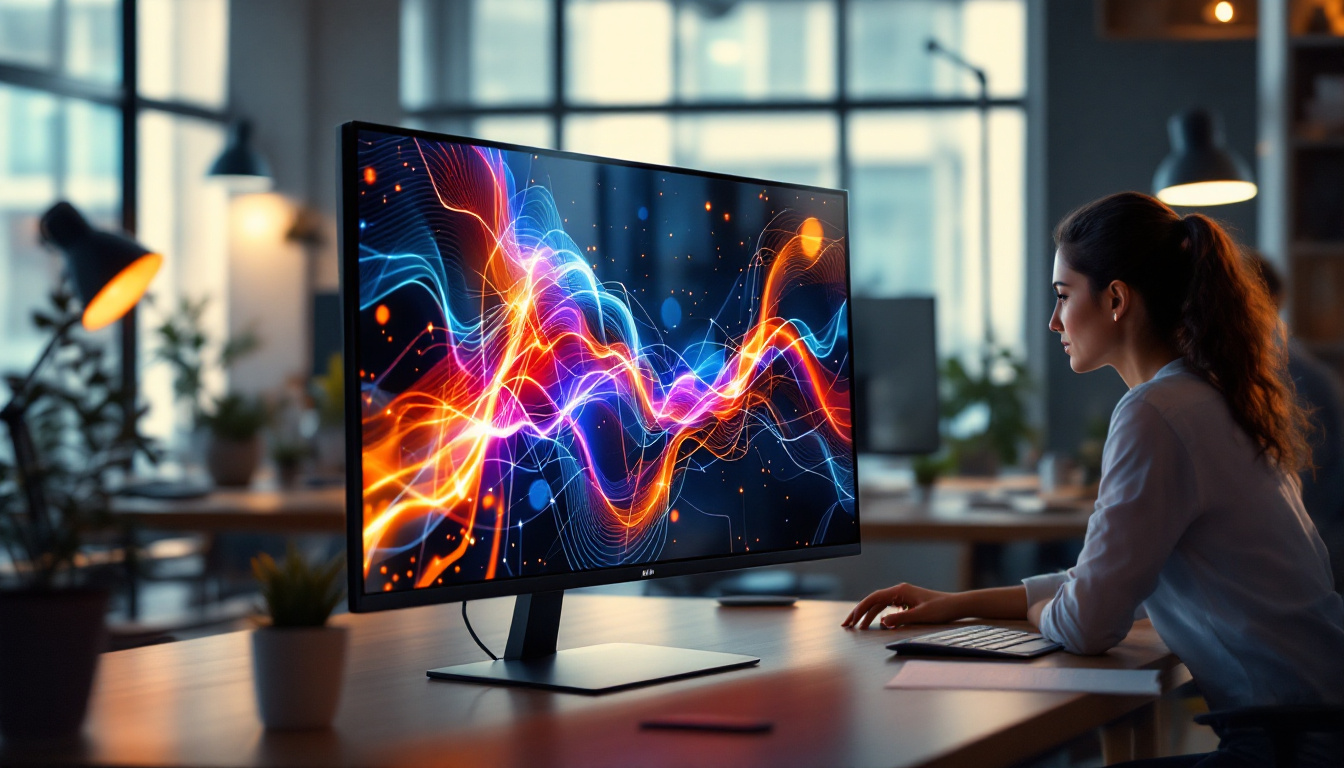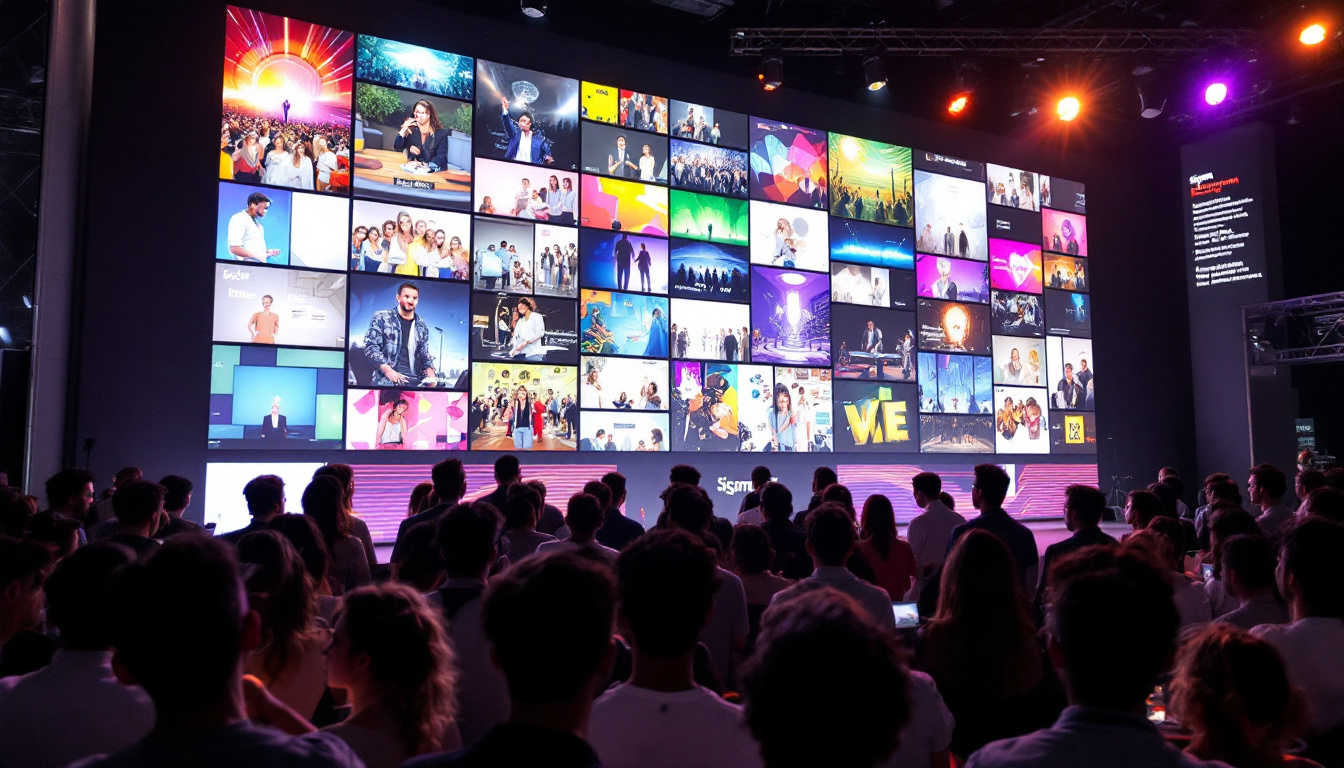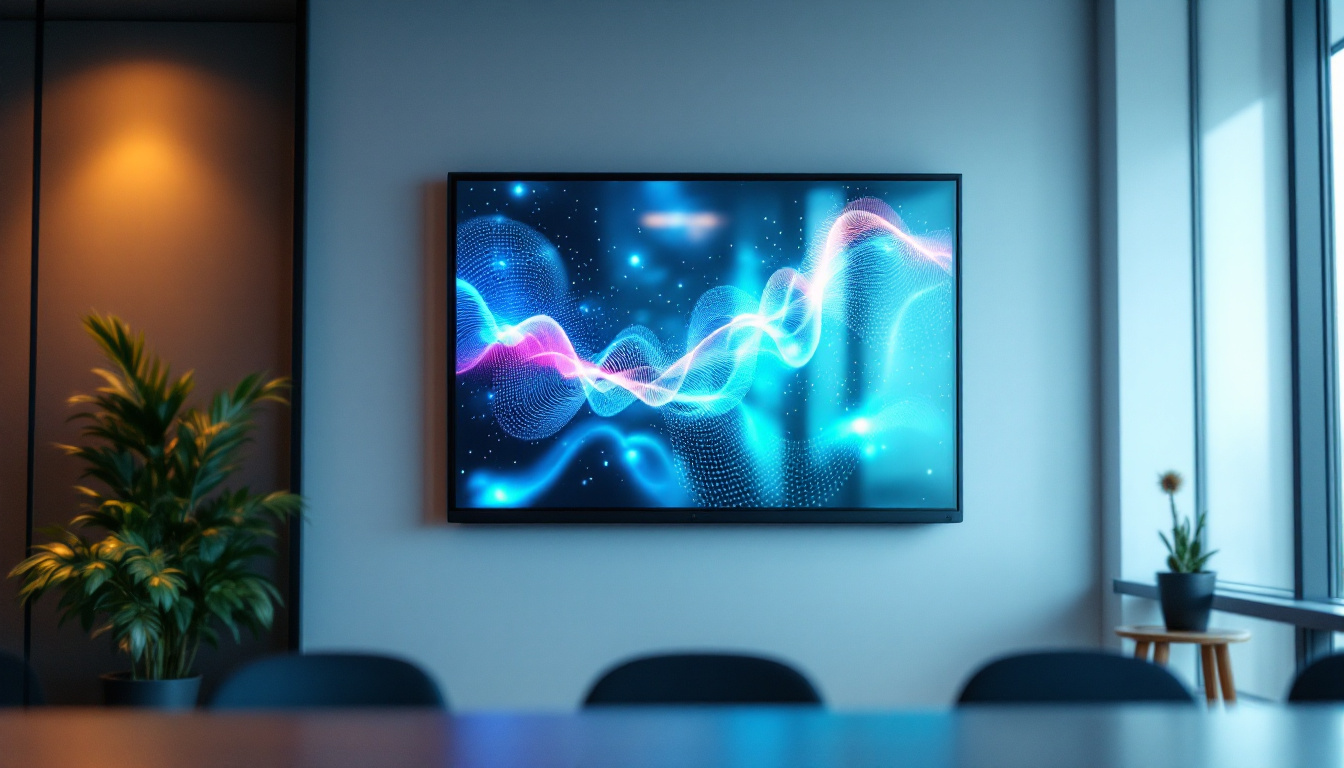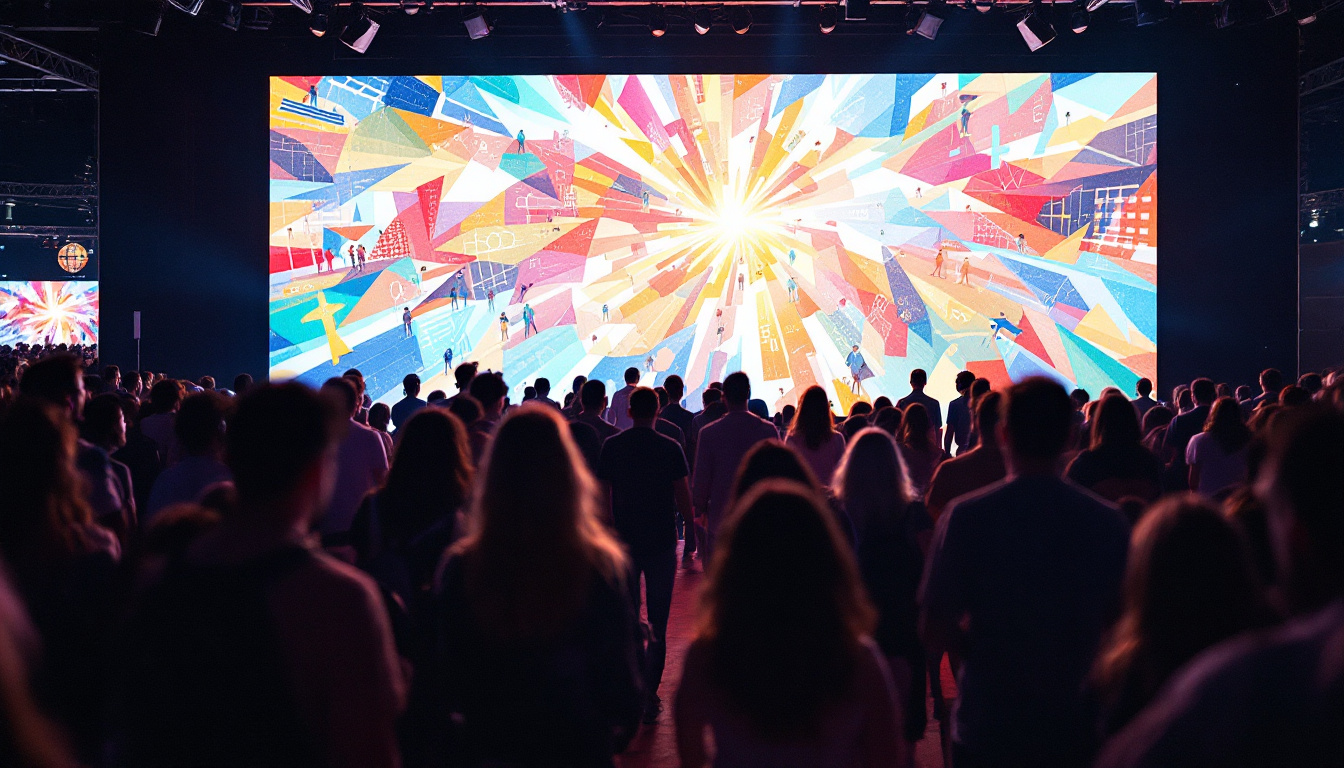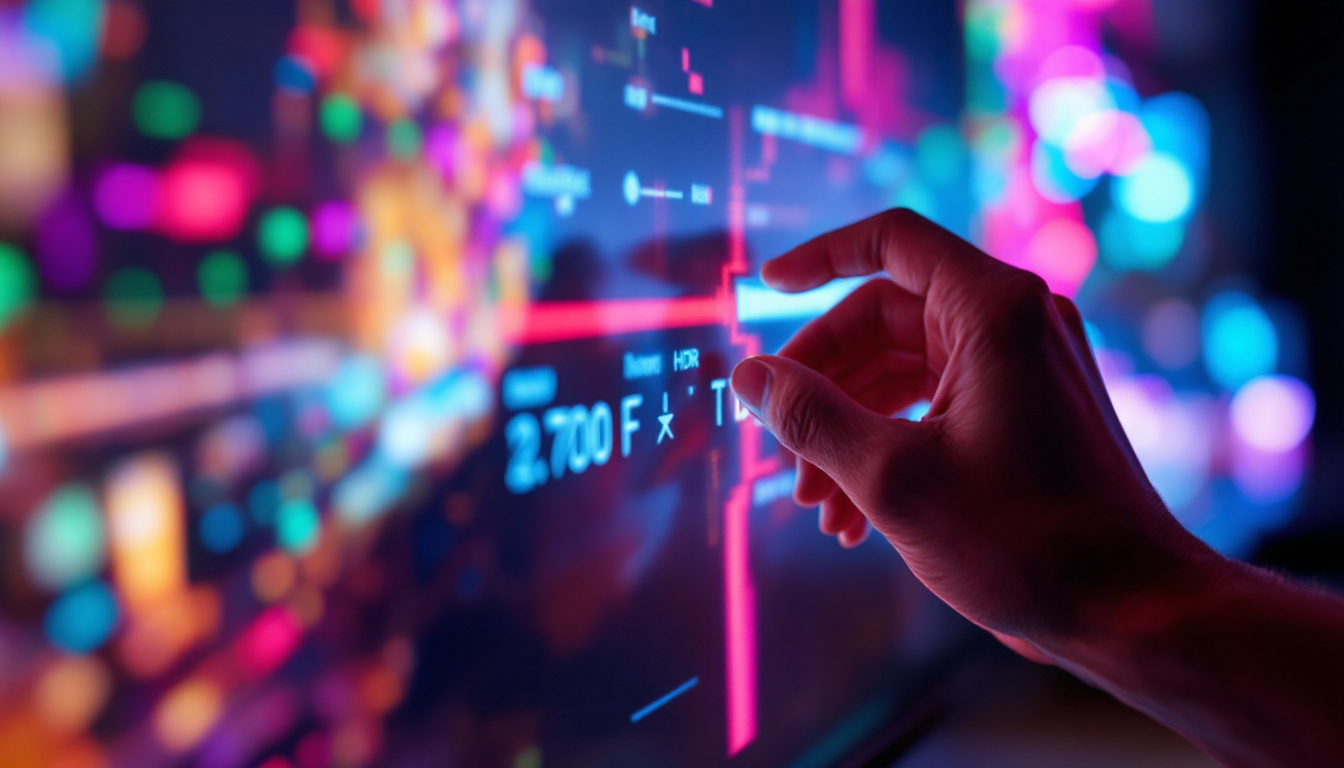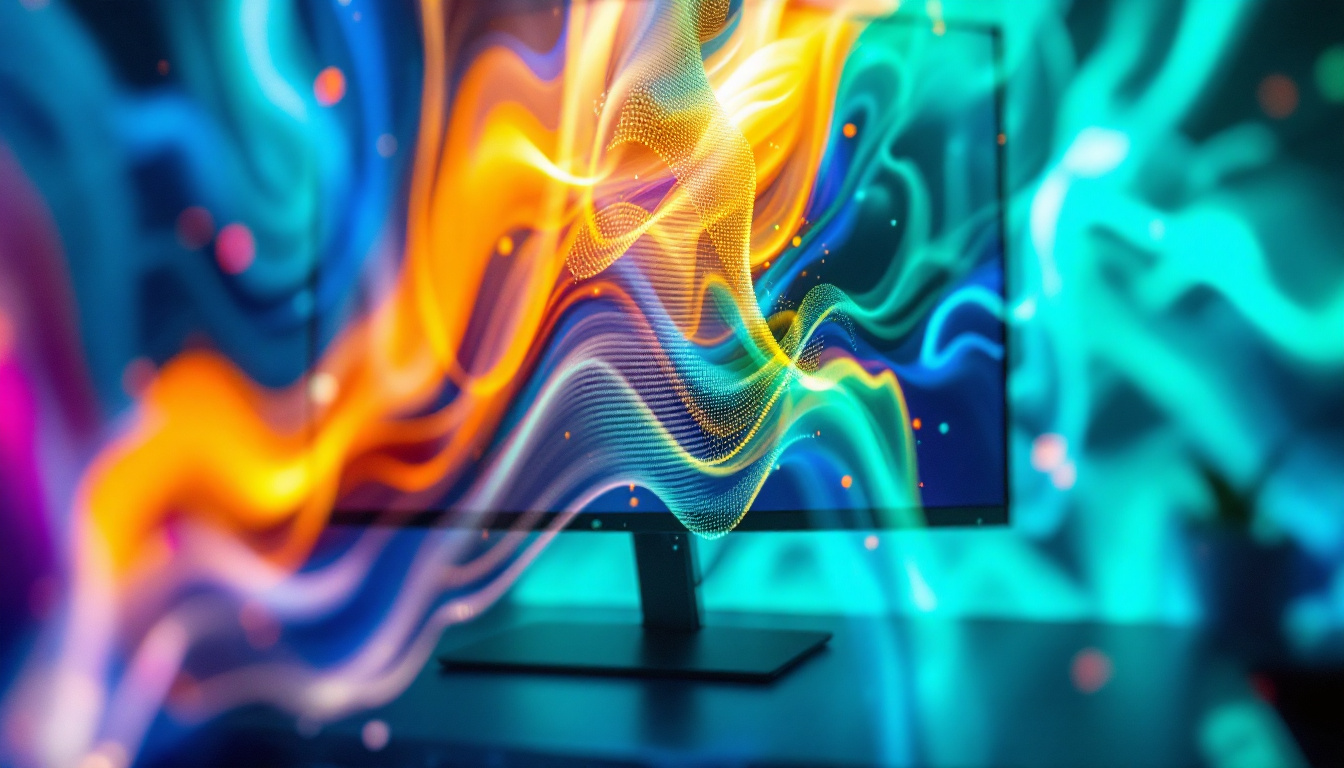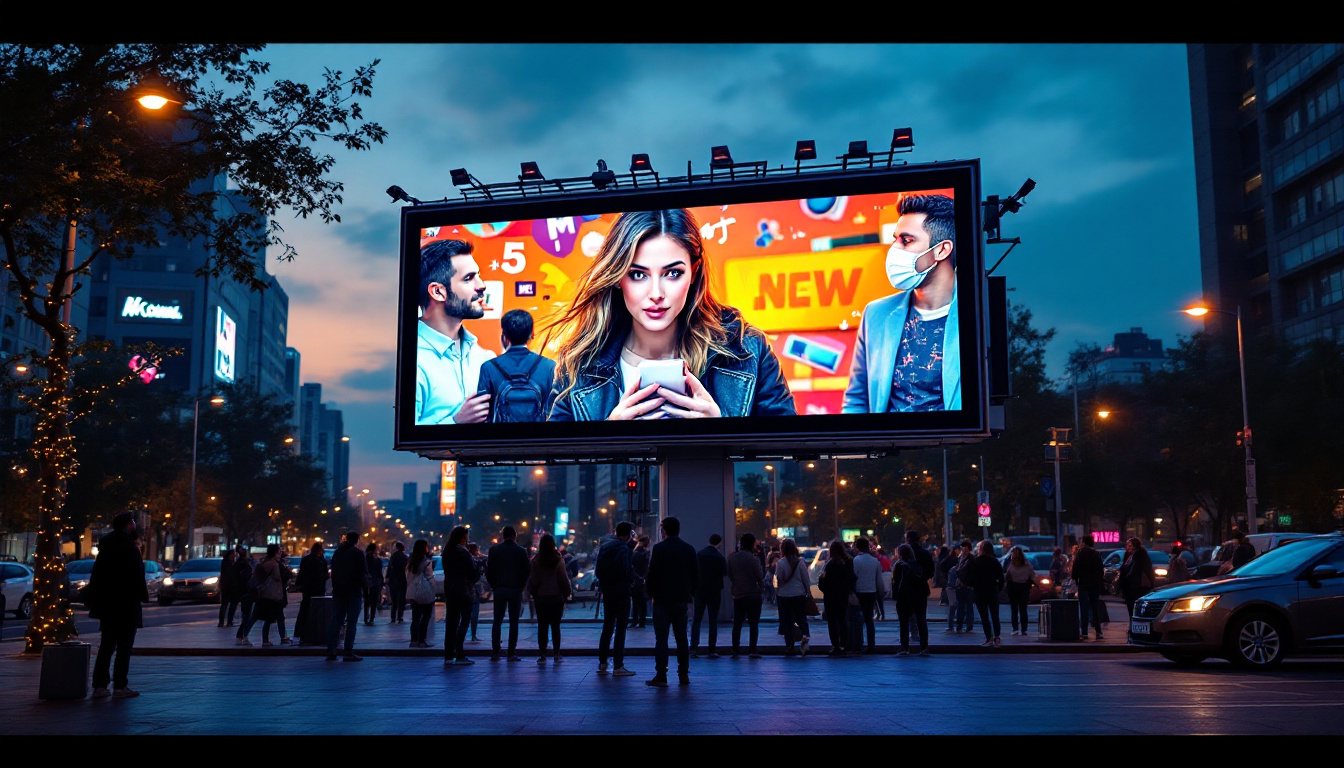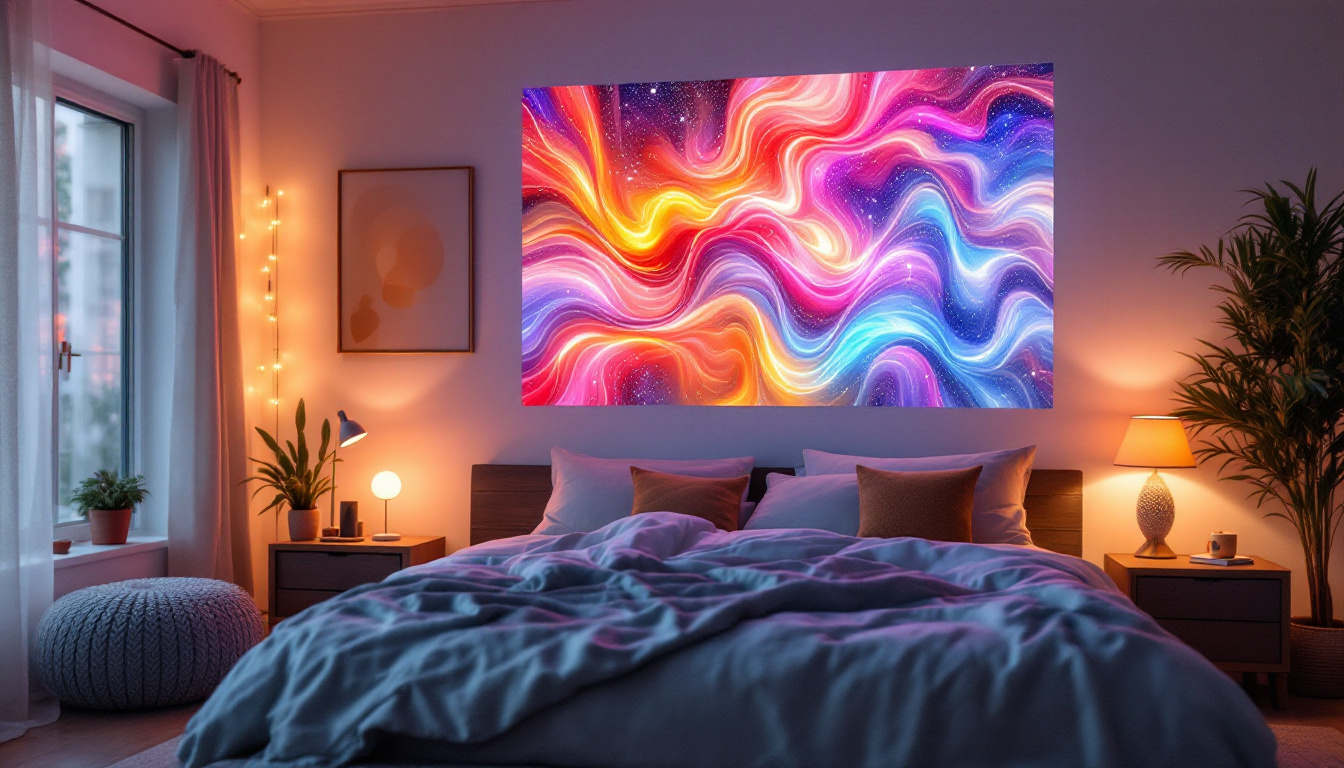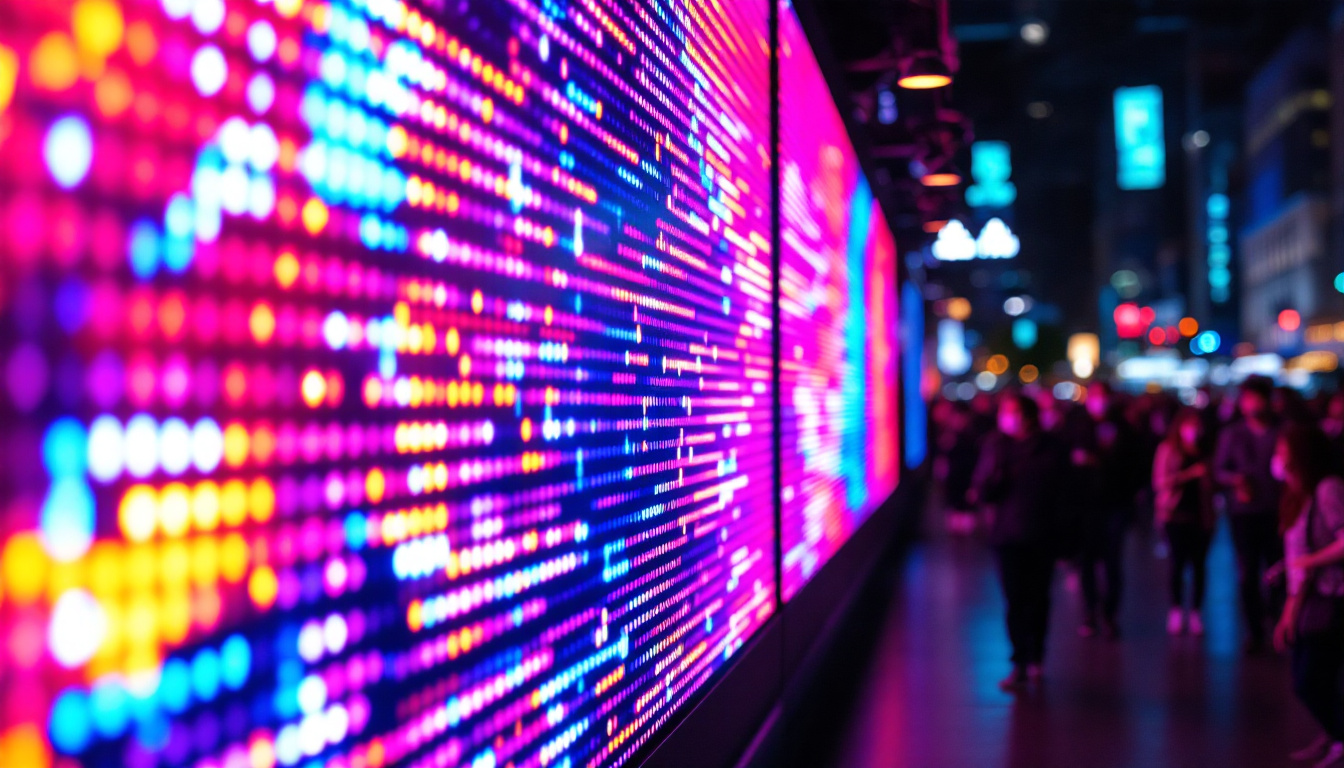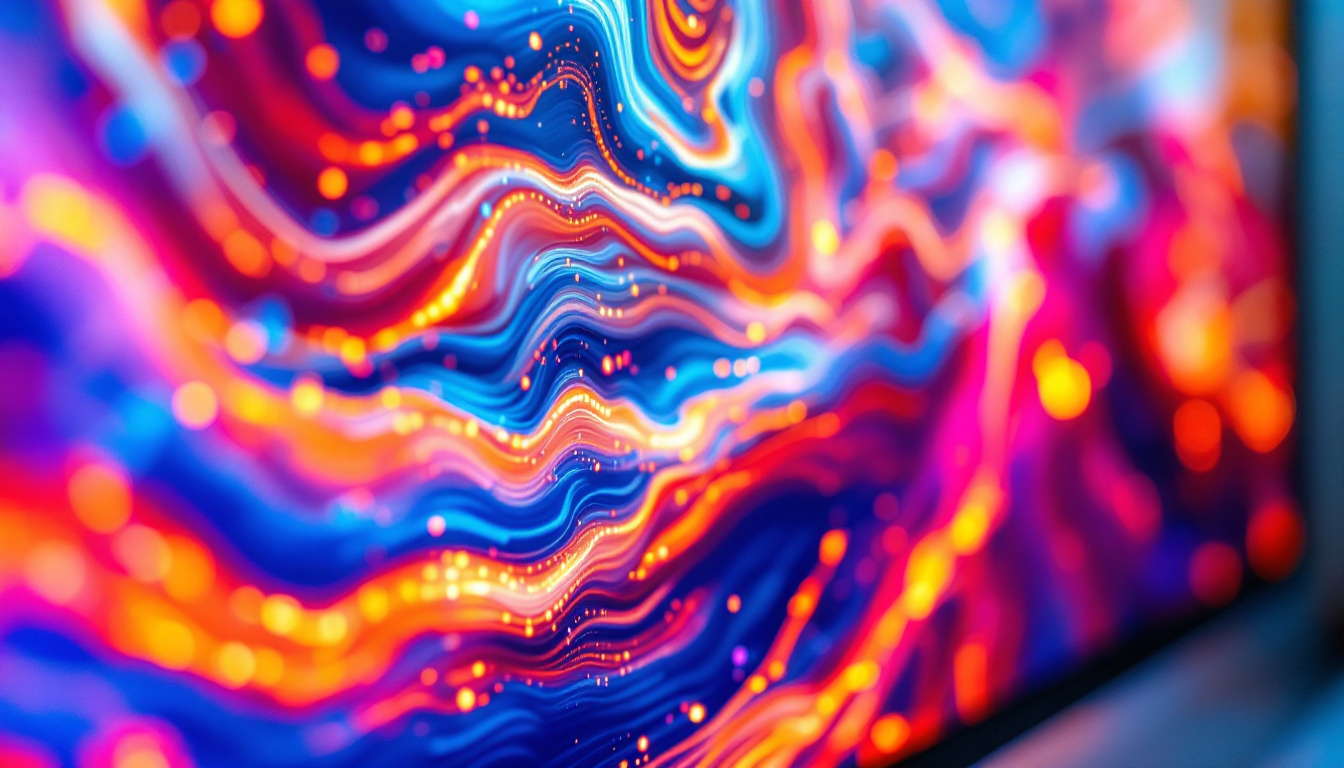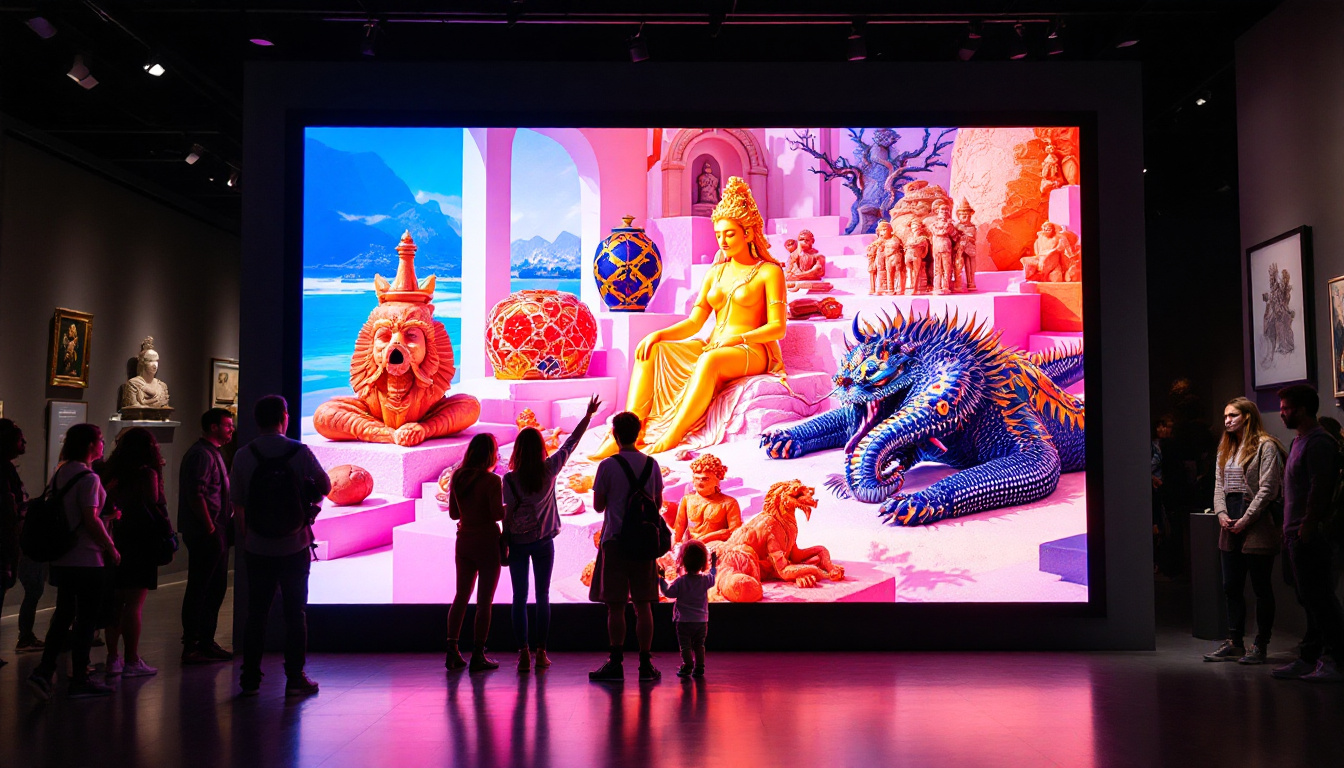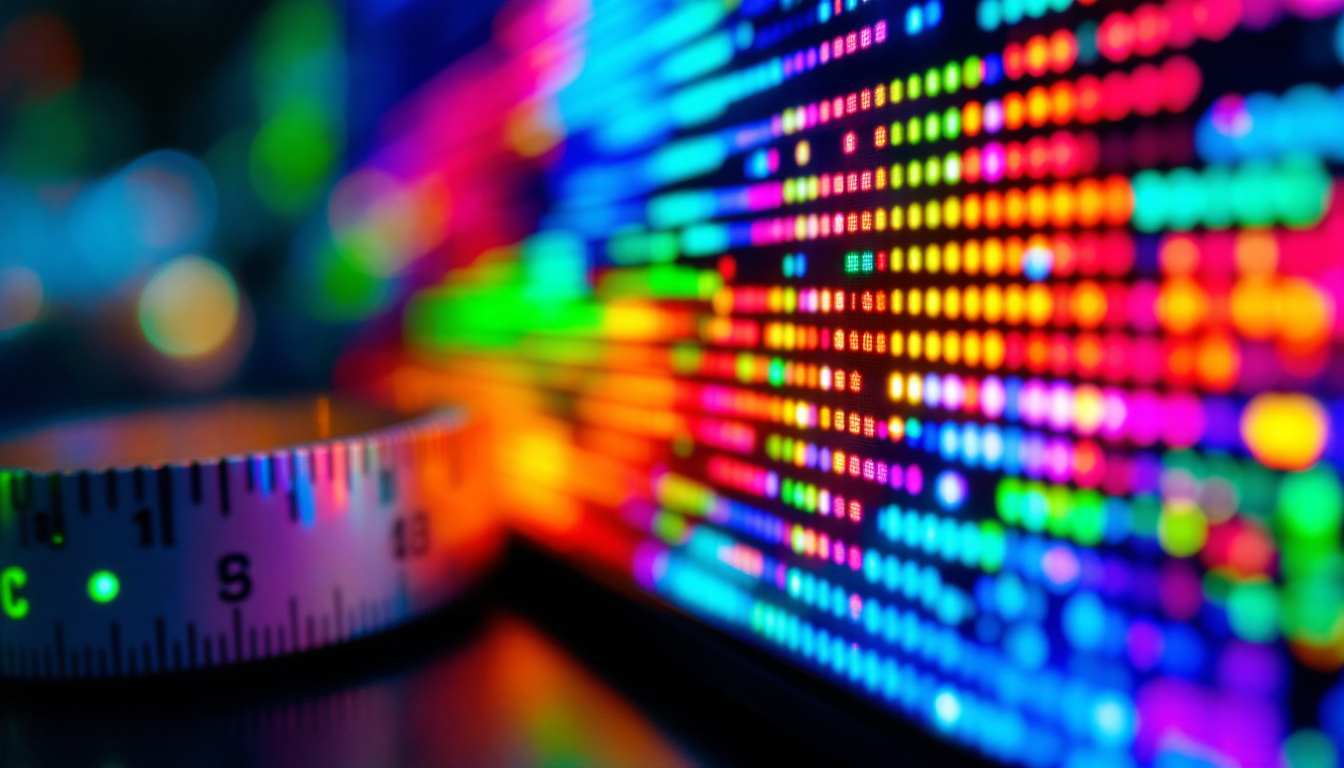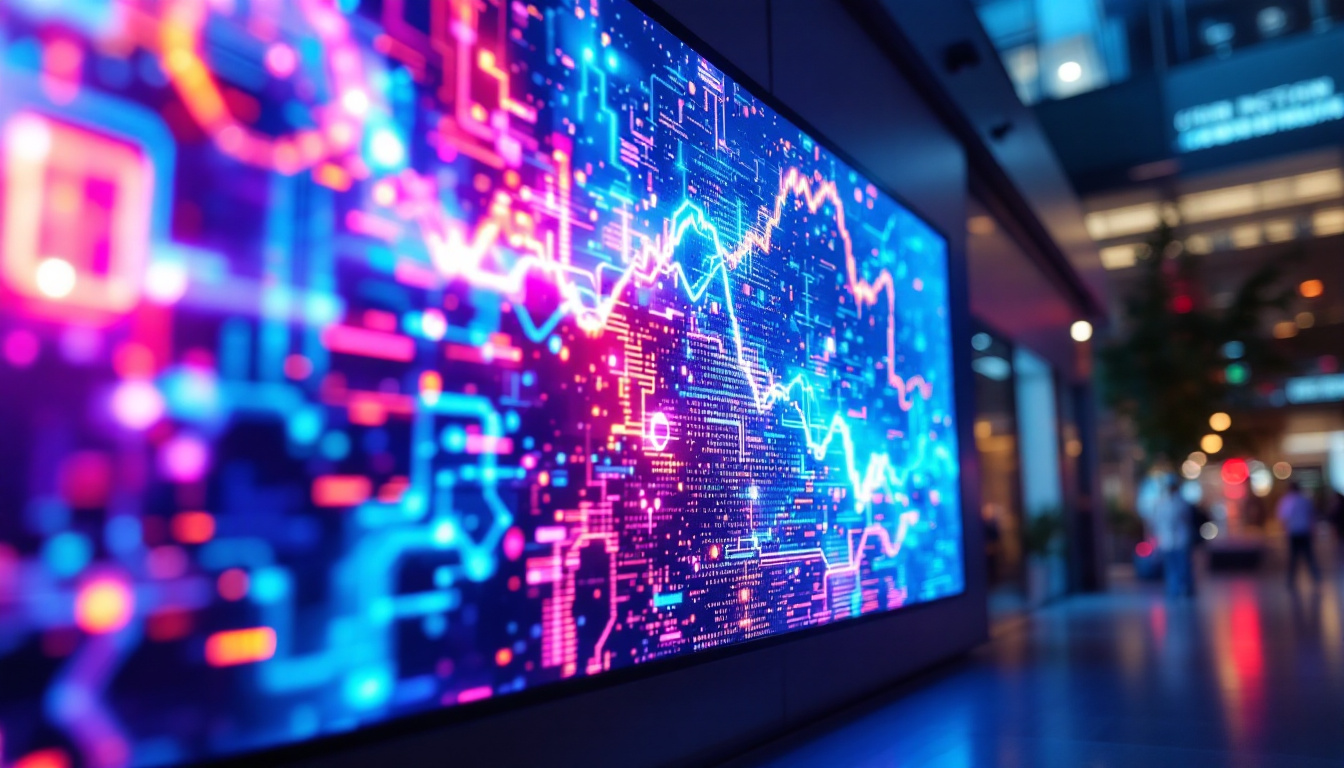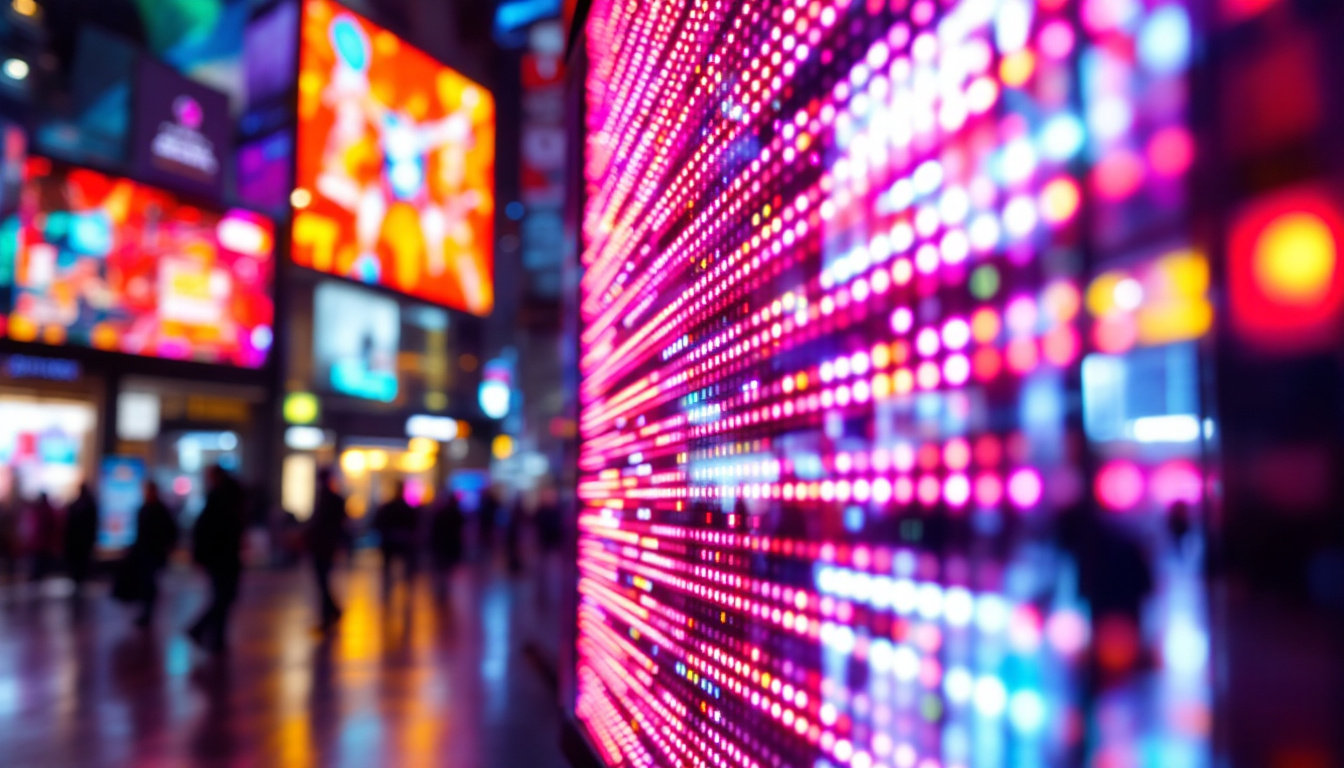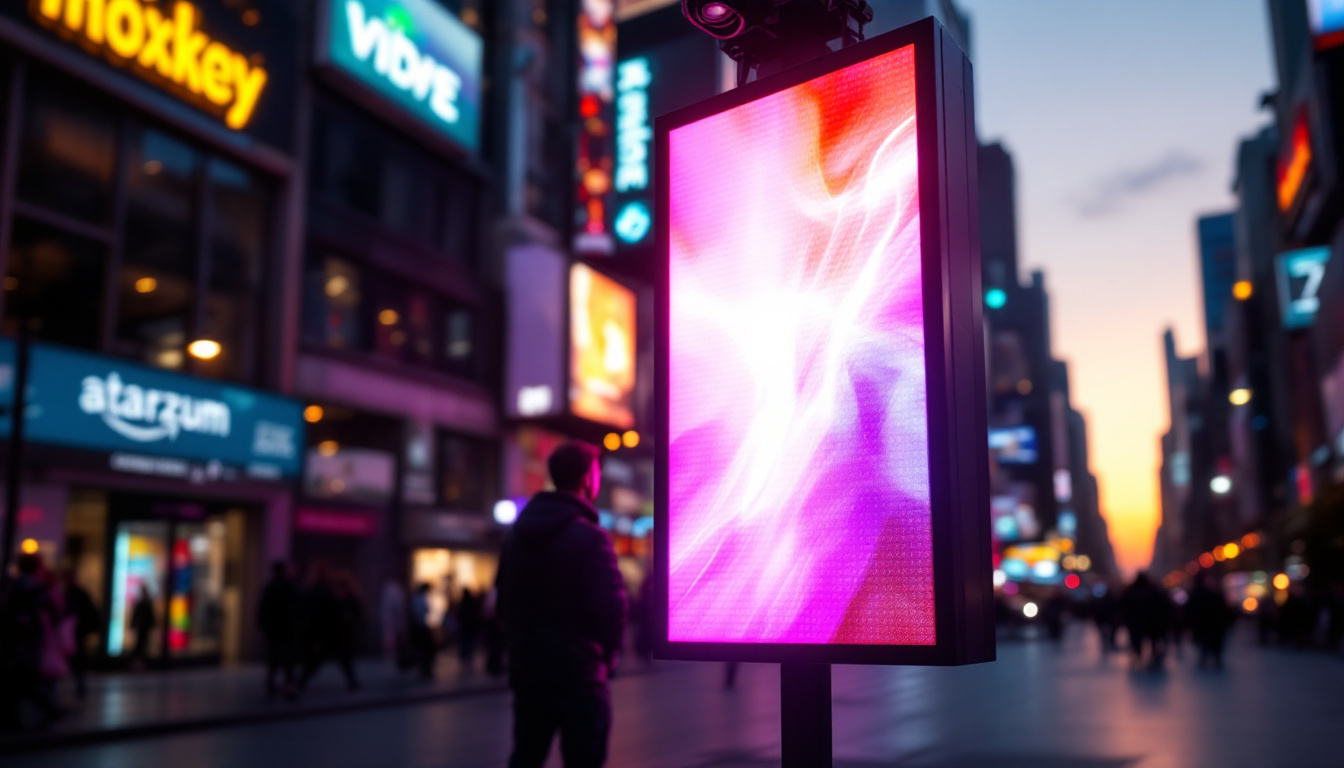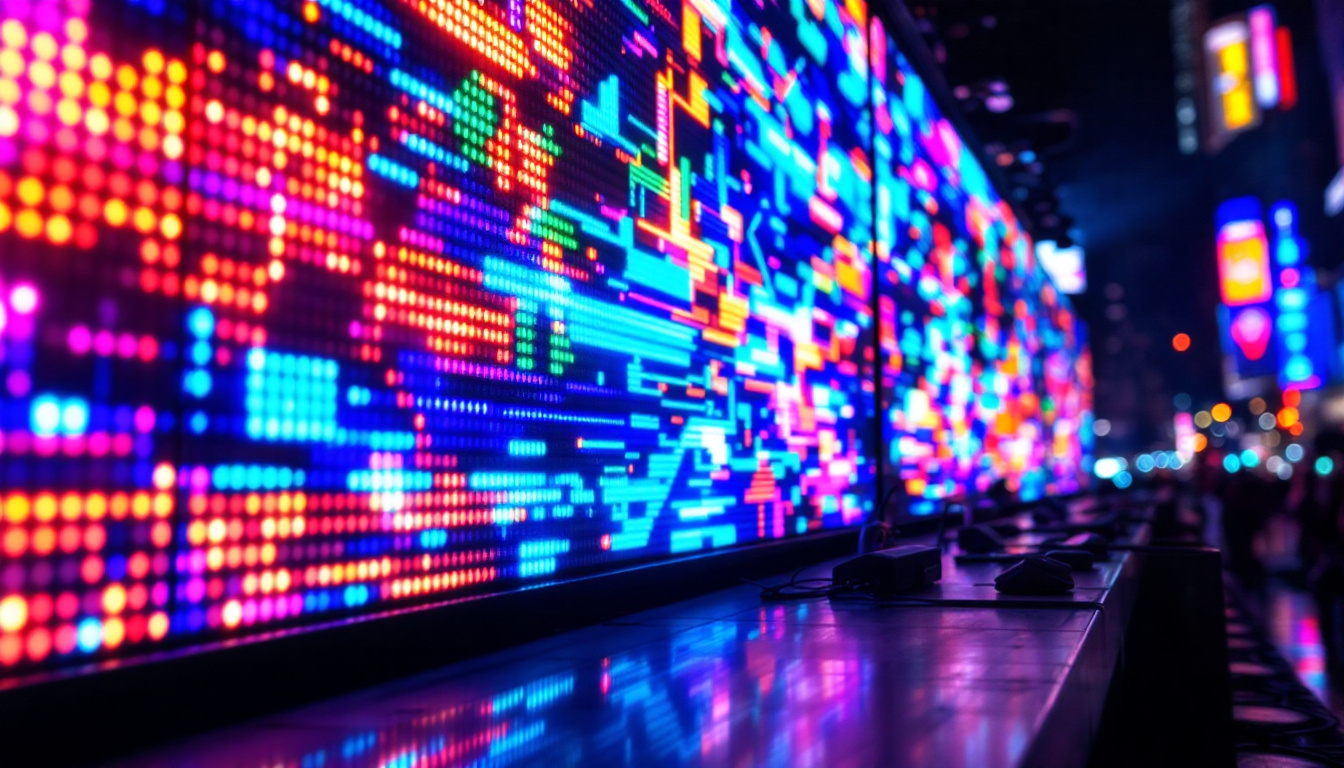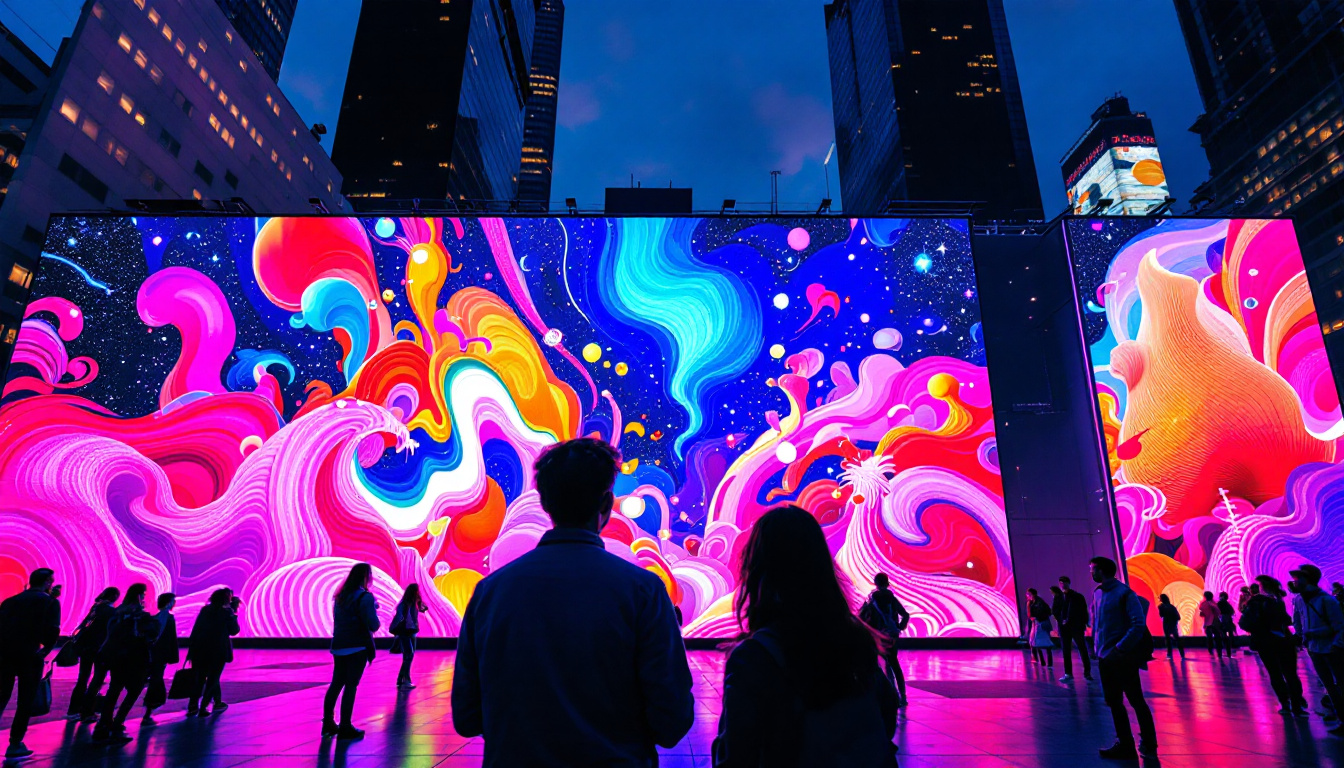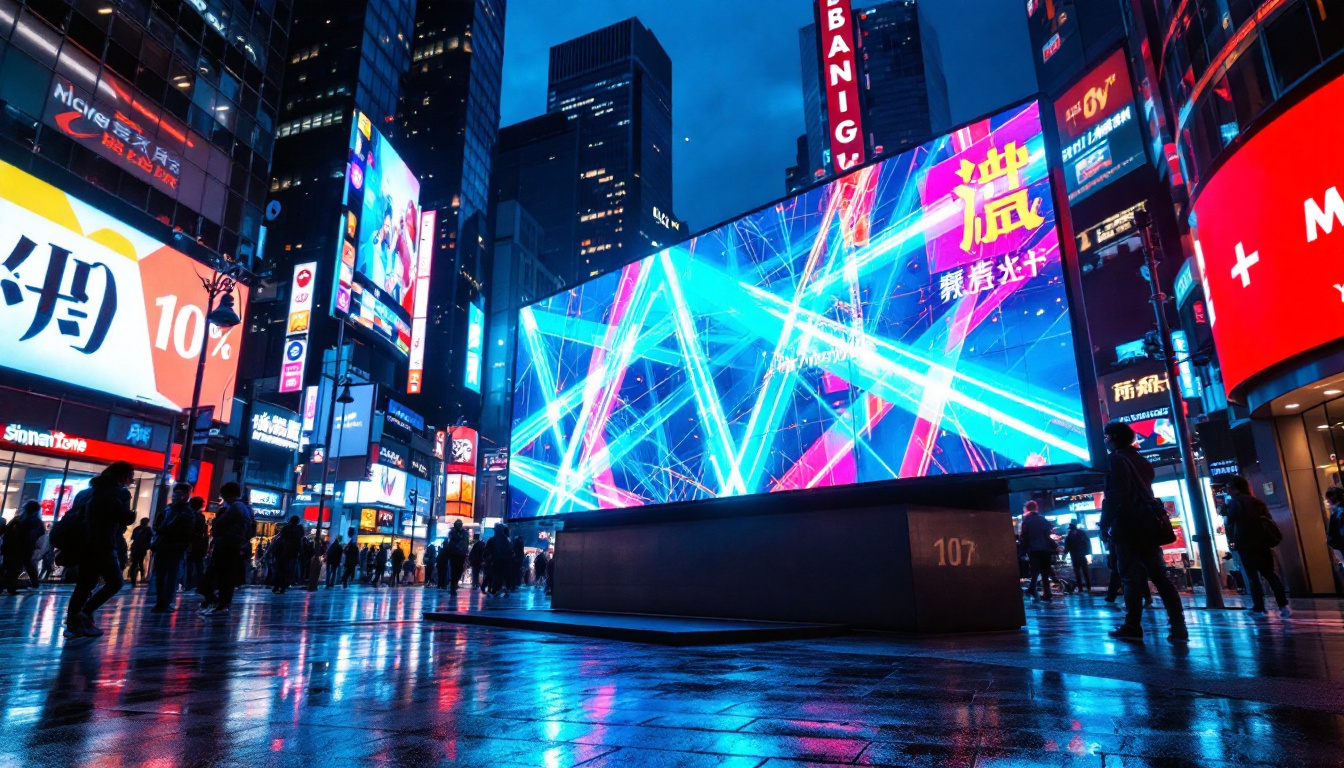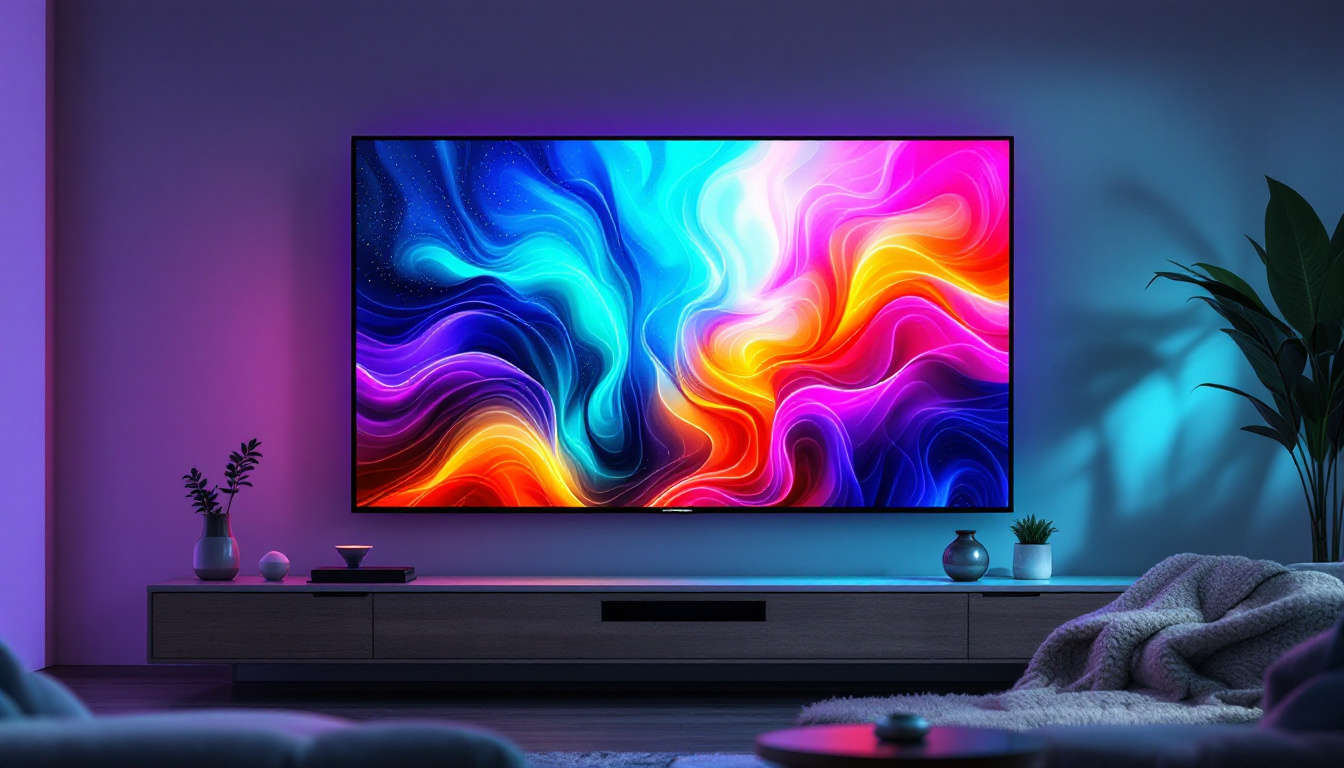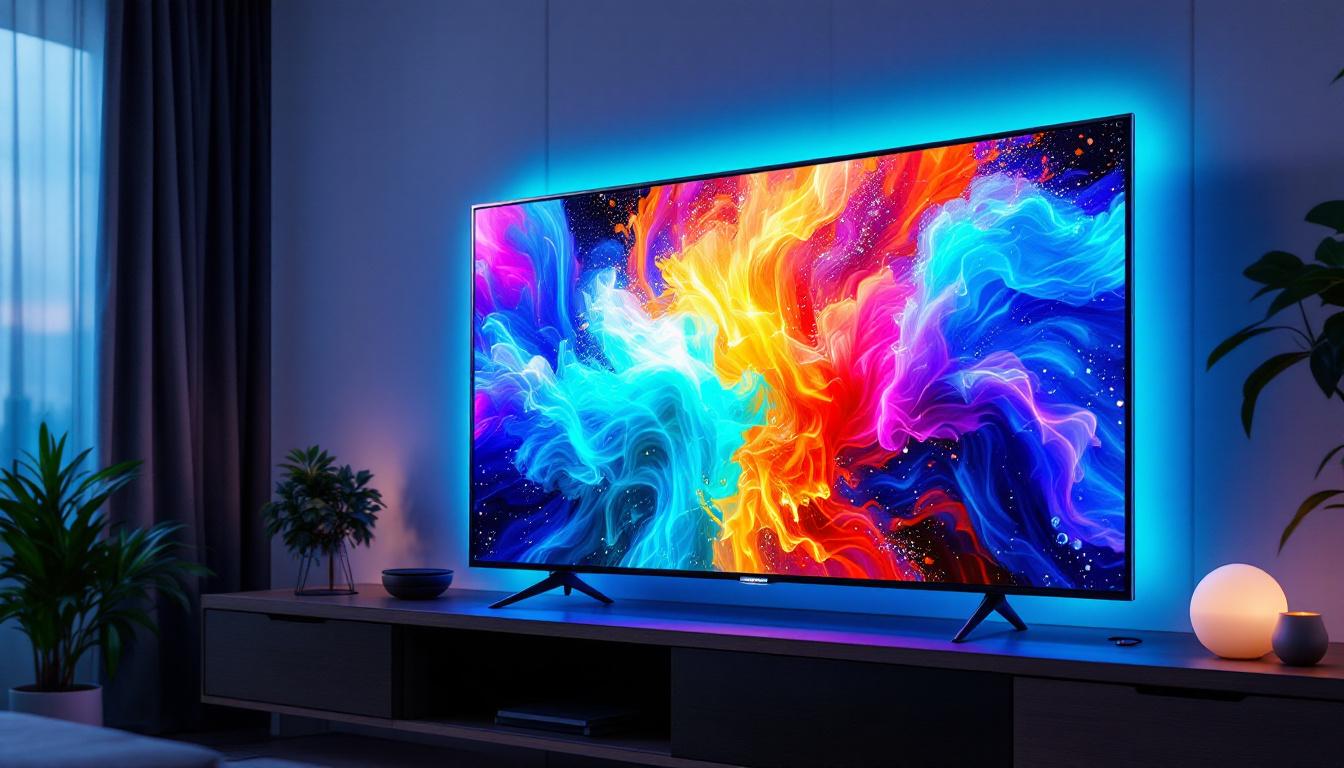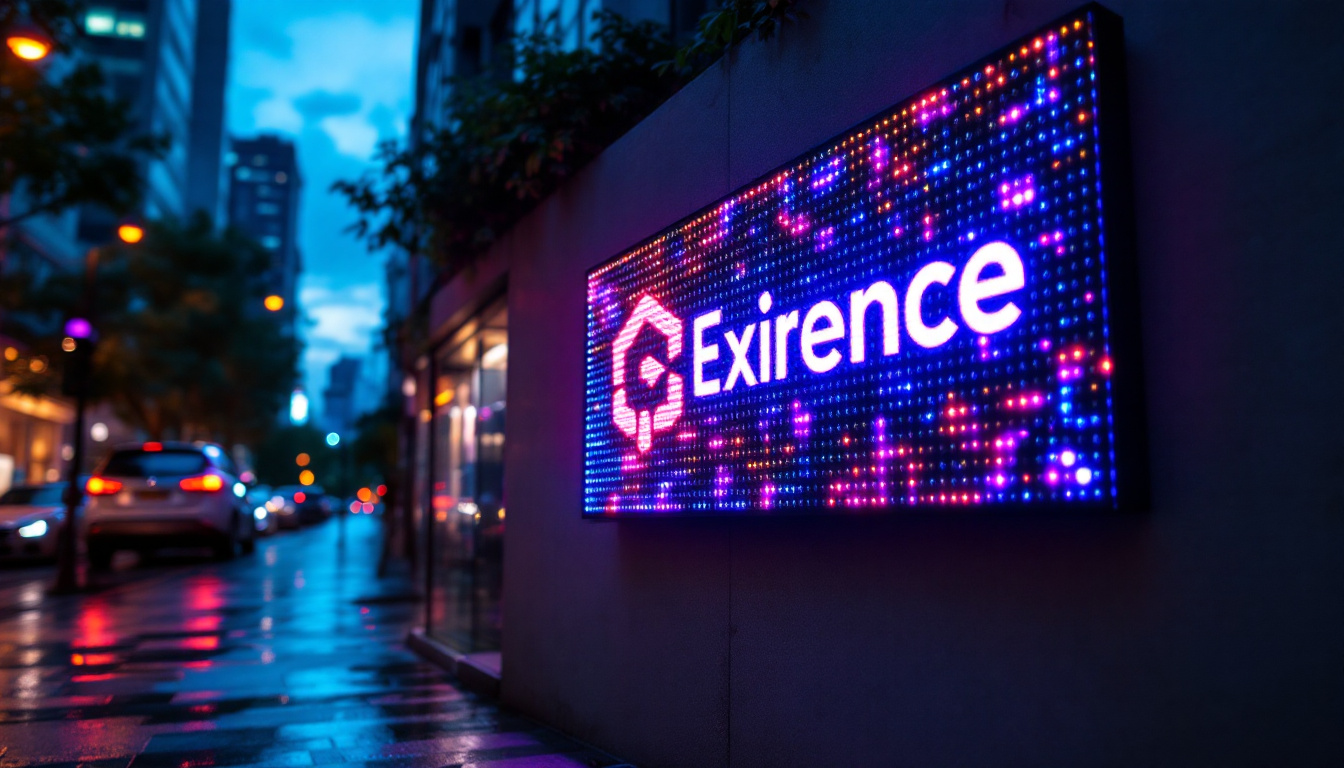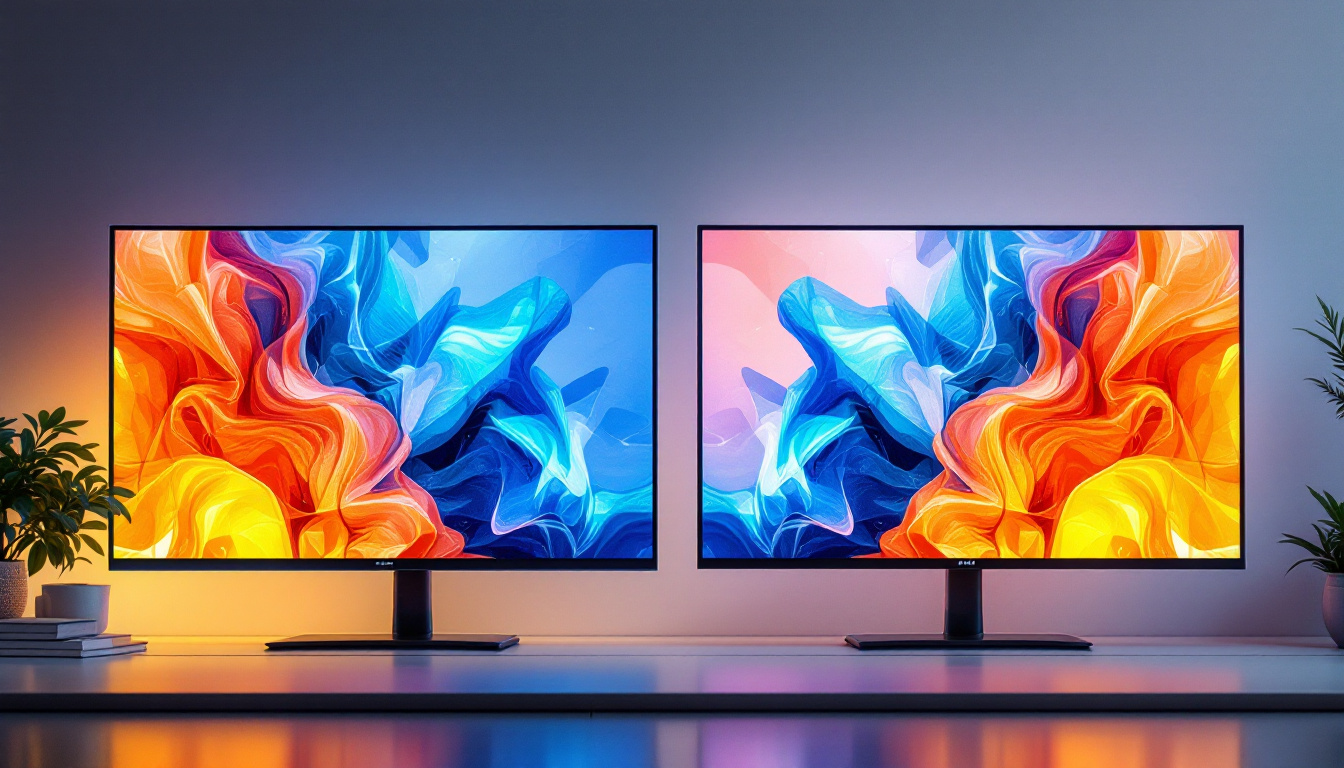In the realm of modern design and technology, LED displays have emerged as a transformative element in various industries, including retail, hospitality, and event management. Their vibrant colors, energy efficiency, and versatility have made them an essential tool for businesses looking to enhance their visual communication strategies. This article delves into the intricacies of LED displays, exploring their features, benefits, and applications, particularly in the context of flooring solutions.
Understanding LED Displays
LED, or Light Emitting Diode, displays utilize semiconductor technology to produce light. Unlike traditional display technologies, LED displays are known for their superior brightness and contrast, making them ideal for both indoor and outdoor applications. Their energy efficiency also sets them apart, as they consume significantly less power than older technologies like incandescent bulbs or fluorescent displays, which contributes to lower operational costs and a reduced environmental impact.
How LED Displays Work
At the core of an LED display is a matrix of tiny light-emitting diodes. These diodes are grouped together to form pixels, which can change color and brightness independently. This capability allows for the creation of dynamic visuals, from static images to full-motion video. The arrangement of these pixels determines the resolution of the display, with higher resolutions providing clearer and sharper images. Additionally, advancements in technology have led to the development of features like HDR (High Dynamic Range), which enhances the contrast and color accuracy, providing viewers with an even more immersive experience.
LED displays can be classified into two main types: direct view and backlit. Direct view displays consist of individual LEDs that emit light directly, while backlit displays use LEDs to illuminate an LCD panel. Each type has its advantages, depending on the intended use and environment. For instance, direct view displays are often preferred for their vibrant colors and deeper blacks, making them suitable for high-end video applications, while backlit displays can be more cost-effective for general use.
Types of LED Displays
There are several types of LED displays, each designed for specific applications. Common types include:
- Indoor LED Displays: These displays are designed for use in controlled environments, such as shopping malls, conference rooms, and theaters. They typically have a higher pixel density, allowing for closer viewing distances. Their ability to showcase high-resolution content makes them ideal for presentations, advertising, and entertainment purposes, often featuring advanced features like touch interactivity.
- Outdoor LED Displays: Built to withstand various weather conditions, outdoor displays are larger and brighter, ensuring visibility even in direct sunlight. They are commonly used for billboards and large signage. Many outdoor displays incorporate protective measures such as weatherproof casings and anti-glare technology, ensuring durability and optimal performance in all conditions.
- Transparent LED Displays: These innovative displays allow light to pass through while still showcasing vibrant visuals. They are often used in retail environments, enabling products to be viewed behind the screen. This unique feature not only enhances the aesthetic appeal of storefronts but also creates engaging advertising opportunities, allowing brands to blend their messaging seamlessly with the physical space.
Advantages of LED Displays
LED displays offer numerous advantages that make them a preferred choice for businesses and organizations. From energy efficiency to longevity, these benefits significantly enhance their appeal.
Energy Efficiency
One of the most significant advantages of LED technology is its energy efficiency. Compared to traditional display technologies, such as LCD or CRT, LED displays consume significantly less power. This efficiency not only reduces operational costs but also contributes to a smaller carbon footprint, making them an environmentally friendly option. Furthermore, the reduced energy consumption translates into lower heat output, which can help in maintaining a comfortable environment in spaces where multiple displays are used, such as control rooms or retail stores.
Longevity and Durability
LED displays are built to last. With a lifespan that can exceed 100,000 hours, they require less frequent replacement than other display types. Additionally, their robust construction makes them resistant to shock and vibration, making them suitable for high-traffic areas. This durability is particularly beneficial in outdoor applications, where displays are exposed to harsh weather conditions, including rain, snow, and extreme temperatures. The ability to withstand these elements without compromising performance ensures that businesses can rely on their LED displays for consistent operation year-round.
High-Quality Visuals
LED displays are known for their exceptional image quality. They offer high brightness levels, vibrant colors, and excellent contrast ratios, ensuring that visuals stand out. This quality is particularly important in retail settings, where capturing customer attention is paramount. Moreover, LED technology allows for a wider viewing angle, meaning that images remain clear and vivid even from off-angles. This feature enhances the effectiveness of advertising campaigns, as it ensures that messages are communicated effectively to a larger audience, regardless of their position relative to the display. Additionally, the rapid refresh rates of LED displays make them ideal for dynamic content, such as video advertisements or live event broadcasts, providing a seamless viewing experience that keeps viewers engaged.
Applications of LED Displays in Flooring Solutions
As technology continues to evolve, LED displays are finding innovative applications in flooring solutions. These displays are not just limited to traditional signage; they are being integrated into the very fabric of flooring itself.
Interactive Flooring Displays
interactive flooring displays utilize LED technology to create engaging experiences for users. These systems can respond to foot traffic, allowing for dynamic visuals that change based on movement. This interactivity can enhance customer engagement in retail environments, museums, and entertainment venues.
For instance, a retail store might install an interactive LED floor that showcases promotions or product information as customers walk over it. This not only captures attention but also encourages exploration and interaction with the brand.
Illuminated Pathways and Signage
LED displays can also be integrated into flooring to create illuminated pathways and directional signage. This application is particularly useful in large venues, such as airports, convention centers, and shopping malls, where guiding visitors is essential.
By embedding LED strips into the flooring, businesses can create visually appealing pathways that lead customers to specific areas, enhancing the overall navigation experience. This not only improves functionality but also adds an aesthetic element to the space.
Artistic Installations
Incorporating LED displays into flooring opens the door to artistic installations that can transform a space. Designers and artists are using this technology to create immersive environments that captivate audiences. From abstract patterns to interactive art pieces, the possibilities are endless.
These installations can serve various purposes, from enhancing brand identity to creating memorable experiences for visitors. For example, a hotel lobby might feature a stunning LED floor that changes visuals based on the time of day or special events, leaving a lasting impression on guests.
Considerations When Choosing LED Displays
While LED displays offer numerous benefits, selecting the right display for a specific application requires careful consideration. Various factors can influence the decision-making process.
Environment and Location
The environment in which the LED display will be installed plays a crucial role in determining the type of display needed. For outdoor installations, factors such as weather resistance and brightness are paramount. Conversely, indoor displays may prioritize resolution and color accuracy.
Size and Resolution
The size of the display should be aligned with its intended use. Larger displays are ideal for outdoor advertising, while smaller, high-resolution displays work well in retail environments where viewers are closer. Understanding the viewing distance and audience engagement is essential in making the right choice.
Budget and Maintenance
Budget constraints can significantly impact the selection of LED displays. While high-quality displays may come with a higher upfront cost, their longevity and energy efficiency can lead to savings over time. Additionally, considering maintenance requirements is crucial, as some displays may require more frequent servicing than others.
The Future of LED Displays in Flooring Solutions
The integration of LED displays into flooring solutions is still in its infancy, but the potential for growth is immense. As technology continues to advance, new applications and innovations are expected to emerge.
Advancements in Technology
Future developments in LED technology may lead to even more energy-efficient displays with enhanced capabilities. Innovations such as flexible LED panels and improved color accuracy could expand the possibilities for flooring applications, allowing for more creative and dynamic designs.
Increased Adoption Across Industries
As businesses recognize the benefits of LED flooring displays, their adoption is likely to increase across various industries. Retail, hospitality, and entertainment sectors are already exploring these solutions, and as costs decrease, smaller businesses may also begin to implement them.
Enhanced User Experiences
The future of LED displays in flooring solutions is not just about aesthetics; it’s about creating immersive experiences. As interactive technologies evolve, businesses will have the opportunity to engage customers in new and exciting ways, ultimately enhancing brand loyalty and customer satisfaction.
Conclusion
LED displays are revolutionizing the way businesses communicate and engage with their audiences. Their versatility, energy efficiency, and high-quality visuals make them an invaluable asset across various applications, including flooring solutions. As technology continues to advance, the potential for innovative uses of LED displays is boundless.
For businesses looking to enhance their visual communication strategies, investing in LED displays—especially in flooring applications—can lead to increased customer engagement and a unique brand experience. The future is bright, and LED displays are at the forefront of this exciting transformation.
Discover the Future of Visual Engagement with LumenMatrix
Ready to elevate your space with cutting-edge LED display technology? LumenMatrix is at the forefront of innovation, offering a wide range of LED display solutions tailored to your needs. From captivating Indoor LED Wall Displays to dynamic Floor LED Displays, our products are designed to transform your visual communication and engagement. Experience the difference with LumenMatrix and take the first step towards a visually stunning future. Check out LumenMatrix LED Display Solutions today and see how we can help your business shine.

